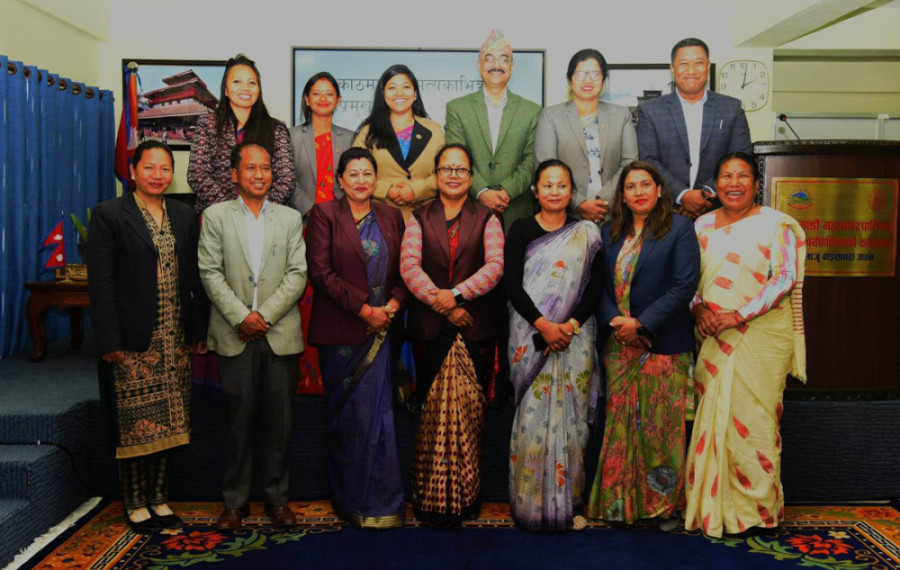Valley
Valley’s deputy mayors form network for coordination
Urban planners fear the new platform might end like Valley mayors’ forum that failed to do anything significant.
Post Report
In a bid to introduce integrated planning and parallel work procedures, a ‘network’ of deputy mayors in Kathmandu Valley was formed on Tuesday. Urban planners welcome the drive but are doubtful if that really works as the Kathmandu Valley Mayors’ Forum formed under former mayor Bidya Sundar Shakya was ineffective.
The deputy mayors’ network met in the Capital. Kathmandu Deputy Mayor Sunita Dangol chaired the first meeting that was attended by a dozen deputy mayors of the Valley. Dangol said the network aims to enhance the capacity of Valley’s deputy mayors, who are mostly female, and to work towards solving problems in an integrated way.
Kathmandu Valley that comprises three districts namely Kathmandu, Lalitpur and Bhaktapur has 18 local federal units—two metropolitan cities and 16 municipalites. Except for Tokha, Madhyapur Thimi, and Changu Narayan municipalities, all the local governments in the Valley have women deputy mayors.
“This is a good initiative because Kathmandu Valley is interlinked with cities and needs integrated planning for overall development,” said urban planner Suman Maher Shrestha.
“But if they don’t come up with a concrete plan and execute it, it makes no sense,” said Shrestha.
The Valley mayors’ forum formed after the local election in 2017 ended without doing anything significant for integrated development last year.
Dangol told the Post that their working procedure will be different and result-oriented. “For example, on Tuesday we invited Raju Kumar Khatiwada, chief judge of Kathmandu District Court, and learnt a lot about law and the legal framework under which we can work,” said Dangol, adding that the deputy mayors had learnt about the judicial committee at the local level.
In each local unit, the deputy mayor or deputy chair oversees the judicial affairs. Article 217 of the constitution authorises the deputy chief to head the judicial committee and settle legal issues. Article 217 (1) says a three-member judicial committee is coordinated by the vice-chair in a village body and the deputy mayor in a municipality in order to settle disputes under their jurisdictions.
“Next time we will bring resource persons from different sectors to educate us, so that we can focus on our local issues,” said Dangol. The deputy mayors would also work together for market inspection; and to settle tax issues.
“Because our local bodies are separated by only houses or rivers, we are highly interconnected. Consulting with each other improves local governance,” said Dangol.
The Valley’s deputy mayors will also hold annual meetings to share their experiences, and make integrated plans.
Nepal has 753 local units including 6 metropolises, 11 sub-metropolises, 276 municipalities and 460 rural municipalities.
Tuesday’s meeting was attended by deputy mayors Anita Lama of Budhanilkantha, Murari Tamang of Tokha, Sushila Adhikari of Nagarjun, Shanta Thapa of Kageshwori Manohara, Basanta Shrestha of Chandragiri, Sanani Lama of Gokarneshwar, Shrijana Burlakoti of Tarkeshwar, Bijaya Krishna Shrestha of Madhyapur Thimi, and Sarita Bhattrai of Suryabinayak.




 18.12°C Kathmandu
18.12°C Kathmandu










